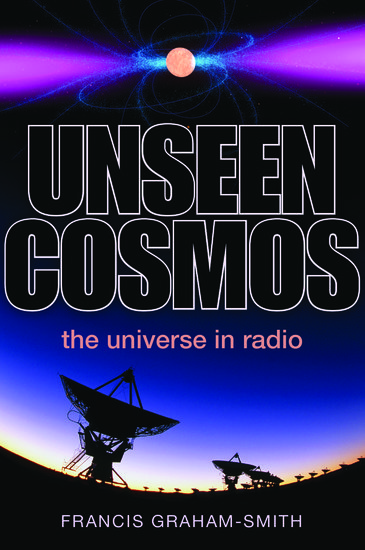By Professor Sir Francis Graham-Smith, FRS
The Crab Nebula and the pulsar at its centre are endlessly fascinating. The pulsar is a neutron star, with the same mass as our Sun but only the size of a city. It rotates 30 times per second, flashing like a lighthouse as it does so. It is very nearly, but not quite, an ideal clock, without any outside influence to disturb it. At Jodrell Bank Observatory we have been watching the pulsar for over 40 years, timing it without missing a beat while it rotated more than 30 billion times. This sounds boring, but it is not much trouble as we only use a small radio telescope for our daily observations. We provide a daily record of its behaviour to other observatories, and especially to telescopes on spacecraft which observe pulses from the pulsar at X-ray and gamma-ray wavelengths. Putting together the results from our radio observations with data from the opposite end of the electromagnetic spectrum has proved remarkably rewarding.
The pulsar has slowed down from 30.2 to 29.7 rotations per second while we have been watching it. This is not unexpected: the energy stored in the rapid rotation powers not only the pulses which we observe but the whole of the Crab Nebula. This little neutron star is acting as a huge electrical generator, spinning at the same speed as a dynamo in a terrestrial power station but with a magnetic field billions of times greater. So far so good, but as is often the case, it is the odd things that seem to be going wrong that we are really interested in.

What we have found recently is less obvious, having taken the whole of the 40 years to show up. The radio pulse is actually double, like a lighthouse with two beams. These two beams are nearly, but not quite, in opposite directions; how are they formed? Fortunately the Fermi gamma-ray telescope has helped us understand the strange geometry of the atmosphere outside the star, where the beams are formed. The whole of this atmosphere is rotating with the star itself, swept round by the powerful magnetic field. It is called a magnetosphere, and it is forced to move so fast that it reaches relativistic speeds; the radiation appears to originate at a location so far outside the surface that it is moving with half the velocity of light. Now comes some more new physics.
The inside of a neutron star is superconducting as well as superfluid. This means that the strength and shape of the huge dipole magnetic field is fixed, or can change only very slowly. So the pattern of the magnetic field in the magnetosphere, where the radiated beams are formed, is fixed. But the star is less than 1000 years old (it was formed in a supernova explosion in the year 1054), so we have been observing it for an appreciable fraction of its lifetime. And we have indeed found a change in the pattern of the double pulse. The two parts are moving apart, at the rate of 3o in the whole lifetime of the star. What this means is that the dipole is not tidily arranged at a right angle to the rotation, as it would be in a power station dynamo, but it is tilted at around 45o and slowly moving to wards the expected orthogonal arrangement. Now the theorists have to take over and explain how that can happen!
The whole project of monitoring the rotation of the Crab pulsar, and some hundreds of others, is a key part of the research organised at Jodrell Bank Observatory by Professor Andrew Lyne. He and his team have been responsible for the discovery of more than half of the known 2000 pulsars. Among these the Crab is still the best!
Professor Sir Francis Graham-Smith FRS, 13th Astronomer Royal 1982-90, is Emeritus Professor at Manchester University. He was Director of Nuffield Radio Astronomy Laboratories, Jodrell Bank 1981-88. As Director of the Royal Greenwich Observatory from 1976-81, he was responsible for establishing the Isaac Newton Group of Telescopes on La Palma (Canary Islands). He is the author of Unseen Cosmos: The Universe in Radio, which Professor Brian Cox says is ‘A definitive account of the past, present and future of Radio Astronomy from one of its founders and most eminent practitioners.’
Subscribe to the OUPblog via email or RSS.
Subscribe to only physics and chemistry articles on the OUPblog via email or RSS.
Image credit: By NASA, ESA, J. Hester and A. Loll (Arizona State University) [Public domain], via Wikimedia Commons



Recent Comments
There are currently no comments.